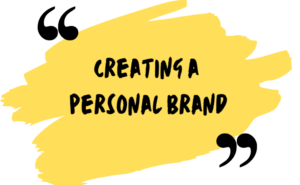
In 2018, I set out to really master my personal brand as a Talent Sourcer. This past year has been the most success I’ve had finding and hiring candidates. I sourced 36 cold/passive candidates for our niche positions across North America. It was a tremendous undertaking for me personally, as I only focus on niche positions that are open more than 60-90 days.
At my company, I primarily focus on three main areas: Finance, Information Technology, and Engineering. The main locations that we hire for are in Minnesota, Kansas, Utah, and California. I wanted to target niche applicants within my company’s locations. So how do you create a plan that finds the right talent pool and how do you build a network that continuously produces leads?
At first, I tried to do research on creating a personal brand when it came to talent sourcing. Unfortunately, there’s really not a lot of good examples of creating a “personal brand” when it comes to this arena. I decided to experiment with some areas and here’s what worked for me as well as what hasn’t.
Social Media
Honestly, I’ve had better success direct messaging applicants versus creating a steady flow of social media content. I have found the best use of social media in cross-referencing a candidate’s information. I’m also finding that many niche-candidates don’t publish their resumes online anymore. That means that social media is often the best way to find applicants online. Also, I found that if I took the time to “like” a candidate’s posts on LinkedIn or social media, that it was noticed. Take the time to invest in your candidates and what they we’re doing.
Email Newsletter
Once I created a relationship with the lead over social media, email, or the phone I would save them in an excel document. If I did not have a position available for that lead I would then ask them if I could add them to my monthly email newsletter. I created a dozen email lists using MailChimp based on skill sets and my locations. I then focused on creating targeted content for those leads. Of course I highlight job opportunities, employer branding/culture, and industry news in relation to their niche. Not everything is going to be perfect; I learned that some people did unsubscribe and I used that to tailor and improve my message. Overall I built many successful lists that helped me stay in contact with a larger pool of niche leads in my locations. Here’s how I created my email newsletter using MailChimp.
Building LinkedIn Projects
If you have LinkedIn recruiter I highly recommend creating different projects for your niche-skill set areas. Right after my intake call I dedicate maybe 30 minutes to put together a quick list of potential leads. At that point I either try to directly connect or send them a networking inmail message. I’ve switched my process — in the past I would directly send messages to cold leads without really investing in a relationship with them. Once I stopped what every other Recruiter or Sourcer was doing and took the time to build a network with leads my response rates shot up dramatically.
Networking with Recruiters
Another huge win that I experienced was how I changed my relationship with other recruiters. I started my year by connecting with other Recruiters and Talent Sourcers in my locations. I gave tips and tricks on what I was doing which helped me expand my network. When I received a Finance position I experimented a bit with this. I reached out to 3 finance (in-house) recruiters in my area and they were able to suggest 2 or 3 candidates that I should connect with.
Calendar Follow-Ups
If I wanted to really remember a candidate I would create an event on my calendar to directly follow up with them. Even if you don’t have a job openings – it’s more about building a relationship with that lead. For example, I sent out a Holiday email. You could expand this and do birthdays or other important events. The more you can build a relationship with that lead the more important or valued they will feel.
Communication
Another huge change that I experienced this year was the way that I communicate with candidates. Instead of assuming, I would ask them how they would like me to stay in contact with them. Surprisingly a lot of applicants wanted to stay in touch over text message. Email and the phone are still important but there has certainly been a shift in communication preferences. I wrote a piece about this change (here).
Update: I’ve written an update on my thoughts on this topic here:
How to Build a Personal Brand as a Recruiter
Recommended Reading:
5 Ways To Build a Sourcer And Recruiter Partnership
How to Make Your Work Culture Authentic
The Sourcing Function Matters Within Recruiting
- AI Search Will Transform Talent Sourcing Forever - January 10, 2025
- Build an AI Sourcing Assistant using ChatGPT 4 - January 10, 2025
- Top Recruiting Leaders to Follow in 2025 - January 8, 2025
